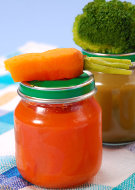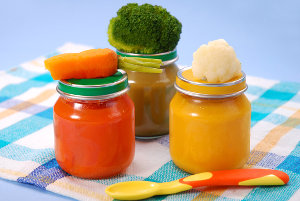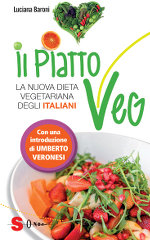
Recommendations during weaning
In the scheme of servings of VegPlate Baby the optimal amounts of foods to eat are shown in detail, while in the special recommendations, it is explained how to ensure the right sources omega-3, vitamin B12 and calcium and vitamin D.

But there are two other nutrients that require special recommendations in the process of weaning, regardless of diet, to get the best benefits for the child's health: iron and fiber.
Iron
All children under 2 years of age regardless of the dietary choice, are at risk for iron deficiency. It is therefore important to apply certain measures to maximize iron assimilation from food. Here are some practical tips:
- If possible, choose flours for children enriched with iron, although in Italy they are not yet widespread.
- Give preference to foods rich in iron: beans (to also be used in both of the principle meals of the day); the pseudocereals (quinoa, amaranth, buckwheat); dried fruit and oilseeds (cashews, pistachios, sesame butter (tahin), pumpkin seeds); wheat germ; small amounts of spices, especially thyme (rich in calcium), turmeric, curry, mint.
- Include a source of vitamin C at every meal. The other organic acids present in fruits and vegetables also help to enhance non-heme iron absorption of vegetables.
- Soak cereal and dry beans before cooking, to hydrolyze phytates; even acid leavening and germination have the same effect.
- Avoid the tannins at meals, that is to say basically tea-based beverages.
Fiber
While in adults, fiber consumption should be increased as much as possible, in young children it is the opposite: during the first year of life, dietary fiber must be limited as much as possible and only toward the end of the second year should children consume whole foods.
It is therefore necessary to use refined grains, not whole-grain, purchasing them already refined or eliminating the fiber with homemade methods, eliminating, during the preparation of whole foods, the external and internal fibrous parts, like bran or skins. The same goes for legumes: you can use those already peeled, or you can pass cooked whole legumes in a food mill to remove the skins.
As for fruits and vegetables, it is preferable to use extracts or centrifuged products, which remove all fiber, or vegetable broth.
VegPlate - the books

